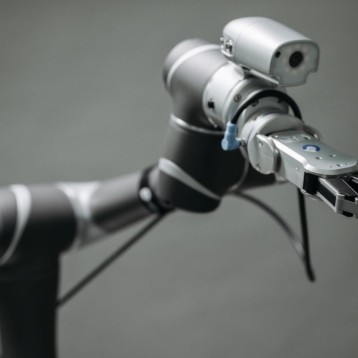|
Professor Ralph Hollis and several colleagues and students at the Microdynamics System Laboratory in the Robotics Institute at Carnegie Mellon designed the robot to fit in approximately the same space as a human, to be omnidirectional (able to turn in any direction without turning), and balance on a single ball rather than multiple balls or legs as most current robot designs use.
The robot is taller and has a higher center of gravity than most other robots, deliberately mimicking the size and shape of a person and enabling it to look people in the eyes. This helps the robot operate successfully in crowded areas and could make it seem more friendly to elderly or disabled people who may not be used to technology. This shape also helps maintain dynamic stability, limiting the occurrences of tipping while turning or operating on a slope.
Ballbot is completely self-contained with an onboard controller (using a 200MHz Pentium processor) that interprets data collected by a Crossbow Technology VG700CA-200 Inertial Measuring Unit (IMU) emulating a vertical gyro and other sensors including encoders to measure motor shaft position and ball rotation. This data is used to determine future movements of these elements and to activate rollers used to move the ball and retain balance of the robot. The robot operates via battery power, using a 48 volt lead acid battery with an operating time of several hours without recharging and includes an 802.11b wireless link to allow communication with the outside world. The robot also includes three retractable legs which are extended while the robot is in its resting state.
TFOT has previously reported on other innovative robots including the SOBeaR robot bartender designed to ensure people drink responsibly and a robot with artificial skin designed to help children with autism learn about social interaction. TFOT has also reported on other assistive technology including acoustic maps designed to help the blind navigate, a brain-actuated wheelchair that reacts to directional thoughts by its users, and the Honda Stride Assist designed to help people with mobility issues walk, lift, and crouch.
Read more about Ballbot at its official project page at Carnegie Mellon.











